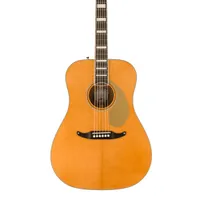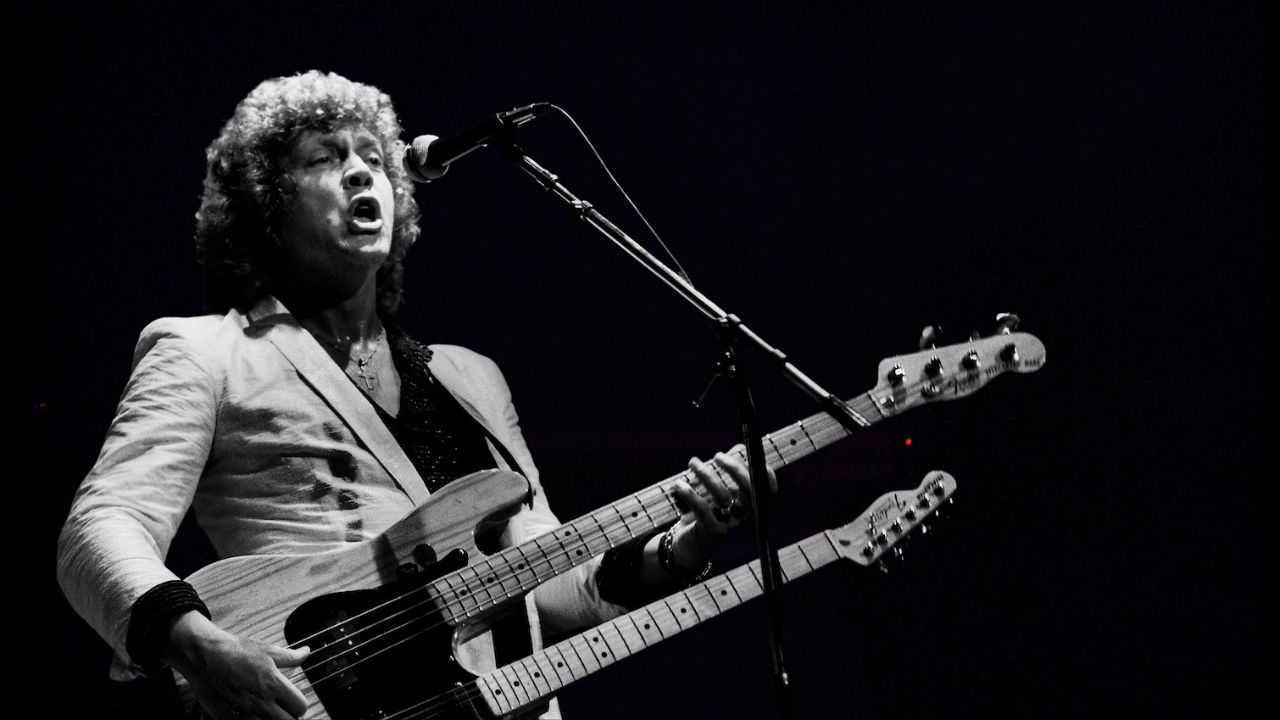Best dreadnought guitars 2025: big body acoustics for powerful tone
Looking for bassy lows and crystal clear top end from your acoustic? These budget-spanning dreadnoughts all fit the bill

Big, bold, bursting with characterful bass and a crystal-clear top end, the best dreadnought guitars are the most iconic steel-string on the planet, bar none. As sleep embraces us, this is the guitar that appears when our dreams demand the sound of an acoustic played with loud abandon.
The dreadnought’s imposing shape, with its broad, ruler-straight shoulders and wide waist, is etched into our subconscious; its tone is destined forever to ring on in our ears. The big dread’s appeal is simply inescapable to the point that, for many, it’s utterly irresistible.
A large part of the dreadnought’s charm is its versatility. It’s most at home belting out strummed chord patterns or flat-picked melodies and runs, but fingerstyle falls well within its comfort zone too. Bass response may be there in spades, but it’s rarely overpowering in the way that some jumbo guitars can be. A good dread will also exhibit a mildly scooped midrange, making it the perfect choice for singer-songwriters who require plenty of space for their vocals to shine.
The dreadnought’s beefy shape was created by Martin in 1916 to produce an acoustic guitar that had enough punch and volume to be heard alongside other band instruments of the day, including drums, saxophones and acoustic bass.
Its popular tonal signature has remained a performance mainstay ever since, despite the introduction of amplification just a decade or so later. These days, as well as Martin, plenty of brands offer dreadnoughts, so I’ve picked some of the very best examples for you, regardless of your playing style or budget.
To get you started, my no.1 pick goes to the iconic Martin D-35 thanks to its rich tone, clear notes and superb build quality. And if you're after more dreadnought information, check out my FAQ section where I've highlighted all the info you need to make an informed purchasing decision.
Quick menu
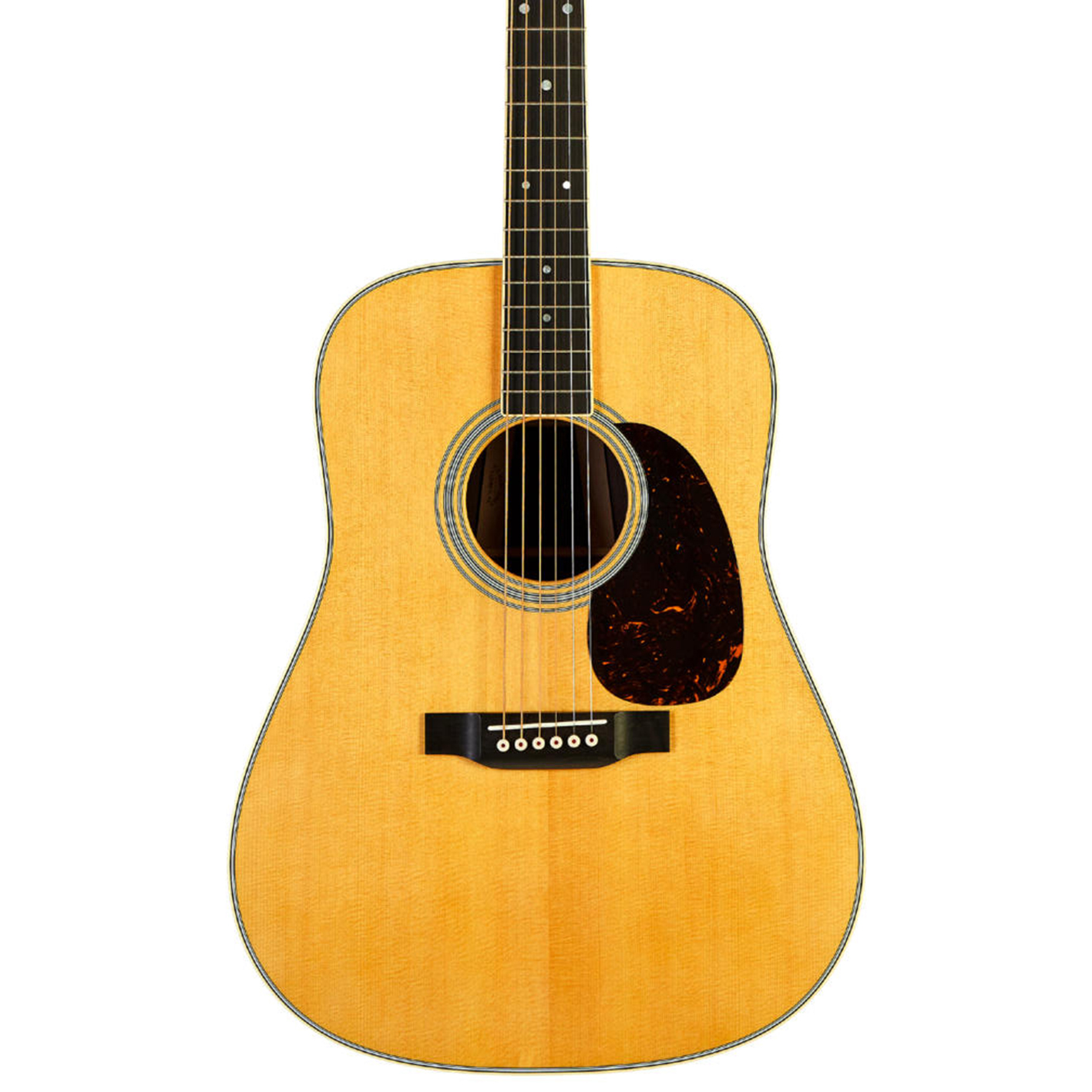
One of the best and most iconic dreadnoughts available, the Martin D-35 is by no means cheap, but if you’re looking for the ultimate acoustic guitar tone, then this is one to seriously consider. It’s built incredibly well, so you can expect this to last a lifetime. Whether you’re seeking something for studio, writing or live use, the D-35 can do it all – and then some.
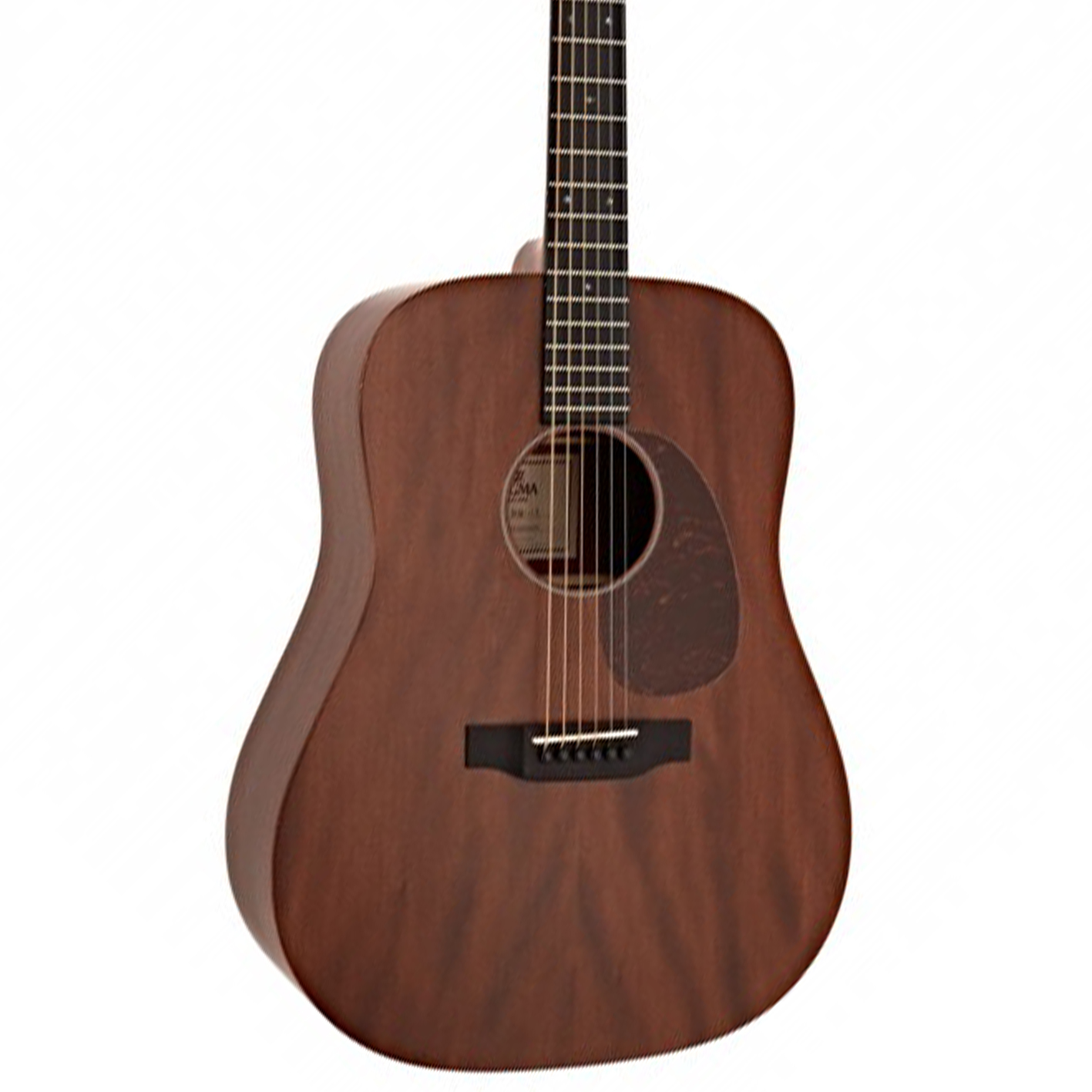
For the DM-15 a solid mahogany top is paired with laminate mahogany back and sides resulting in a great sounding guitar with plenty of bass and treble frequencies, and a nice, albeit slightly tamer, mid presence. You get great note separation so chord work is a joy on this guitar, though lead lines will ring out beautifully as well.
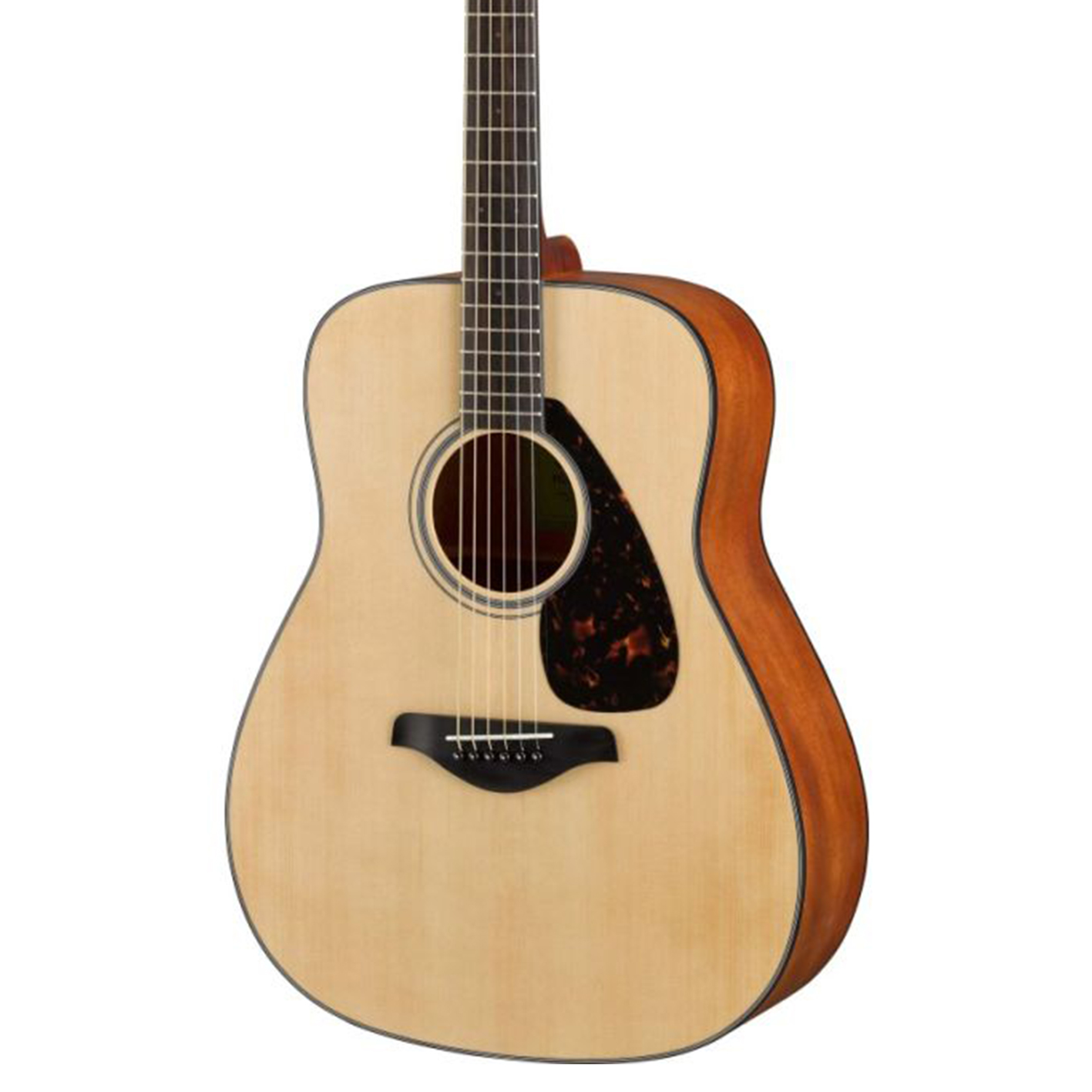
The FG800 is great, particularly as a beginner acoustic, but more experienced players will get along with it just fine too. The neck profile is quite thin, but still with enough body to really get your hands around; the neck also has a matte finish which means that if you’re playing for long periods then the neck doesn’t get slippy as you sweat.
Best overall

1. Martin D-35
Our expert review:
Specifications
Reasons to buy
Reasons to avoid
✅ Buy if you want one of the best dreadnoughts around: The Martin D-35 is a beautiful-sounding guitar and its robust enough to last a lifetime.
❌ Avoid if you're on a budget: Excellent build quality and tone comes at a price, so it might be too expensive.
Build: ★★★★★
Playability: ★★★★★
Sound: ★★★★★
Overall: ★★★★★
One of the best and most iconic dreadnoughts available, the Martin D-35 is by no means cheap, but if you’re looking for the ultimate acoustic guitar tone, then this is one to seriously consider.
Constructed using a solid spruce top and solid East Indian rosewood back and sides, this dreadnought yields a rich sound that suits so many different styles of music.
Chords ring out clearly – every note identifiable, balanced and clear and, of course, the Martin D-35 has that powerful low end, but it’s also super rich in the top end.
You’ve got some mids there as well, but there is the natural slight mid-scoop, as you’d expect from this type of guitar. Melody lines ring out beautifully too, with rich harmonic sustain across the fingerboard.
Yes it's expensive, but it’s incredibly well-built, so you can expect this particular guitar to last a lifetime. Whether you’re seeking something for studio, writing or live use, the D-35 can do it all – and then some - and that's why I've made it my top pick.
Best modern
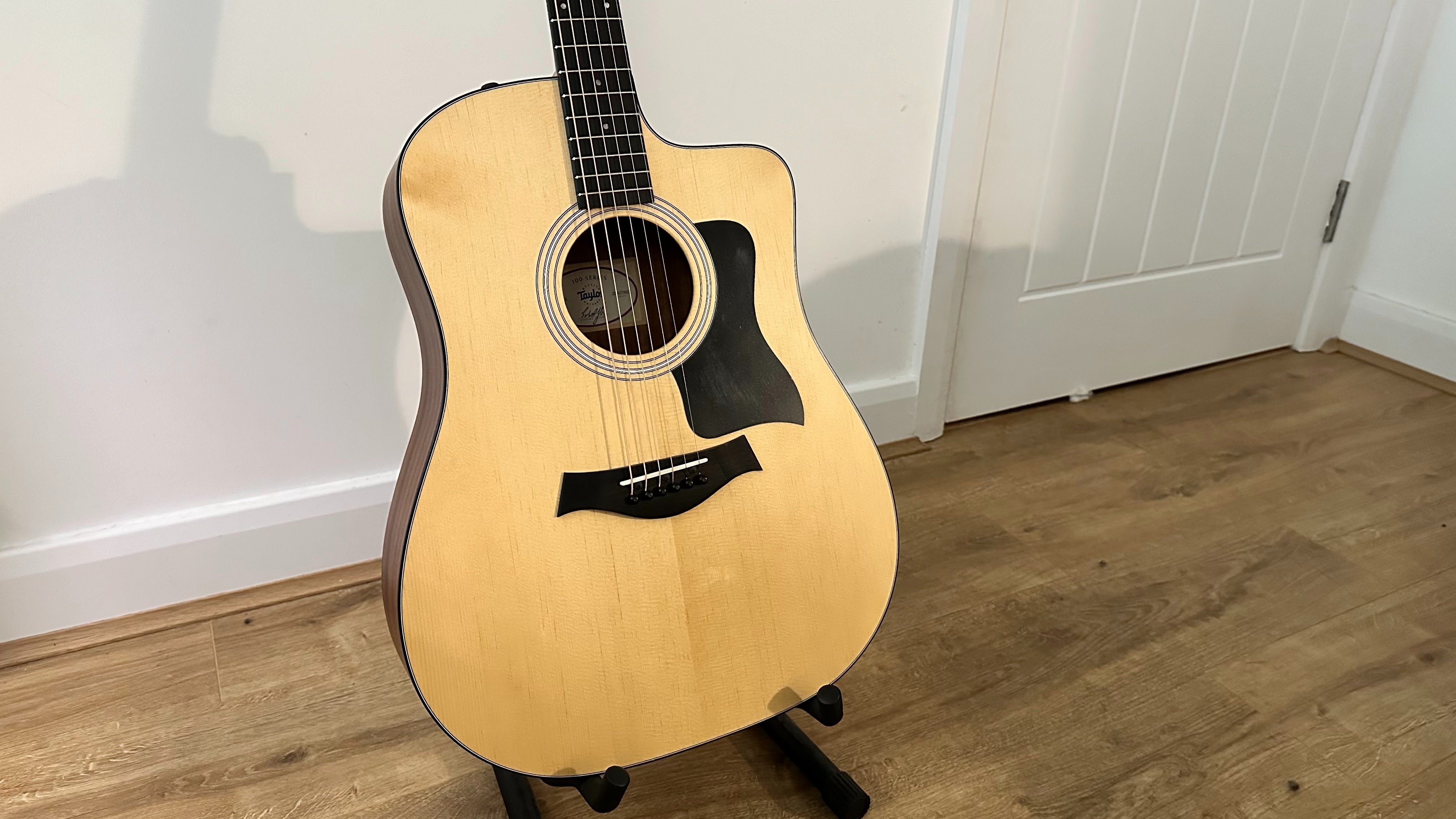
2. Taylor 110ce
Our expert review:
Specifications
Reasons to buy
Reasons to avoid
✅ Buy if you want a super-playable acoustic: The cutaway in the body makes this an easy to play guitar that sounds great.
❌ Avoid if you're after a more classic sound: The Taylor 110ce might not be best suited for more classic tones.
Build: ★★★★★
Playability: ★★★★★
Sound: ★★★★★
Overall: ★★★★★
Taylor guitars are known for their fantastic playability and rich, crisp, high-definition tone. The 110ce encapsulates that perfectly, and for a great price.
With this guitar, you’d be more than ready to hit the stage or the studio and keep up with the pros. It’s reliable and it’s built well so it'll likely last you a long time too.
The nice, bright articulation delivered by the solid spruce top is balanced out with the layered sapele back and sides which add a touch of warmth. The dreadnought body shape ensures that you get plenty of bottom end power as well as the top end sparkle that they’re known for.
This version also has a cutaway in the body making it really easy to access the highest notes on the fretboard, as well as a great sounding pickup and easy access controls.
Whether you’re a singer-songwriter looking for something to perform live with, or you want a solid workhorse acoustic, I think the Taylor 110ce is one of the best dreadnoughts you can get right now.

"The Taylor 110e may not have the opulent appearance of other Taylor models, but what it lacks in the looks department, it sure makes up for in terms of playability, build quality and sound."
Read more: Taylor 110ce review
Best workhorse
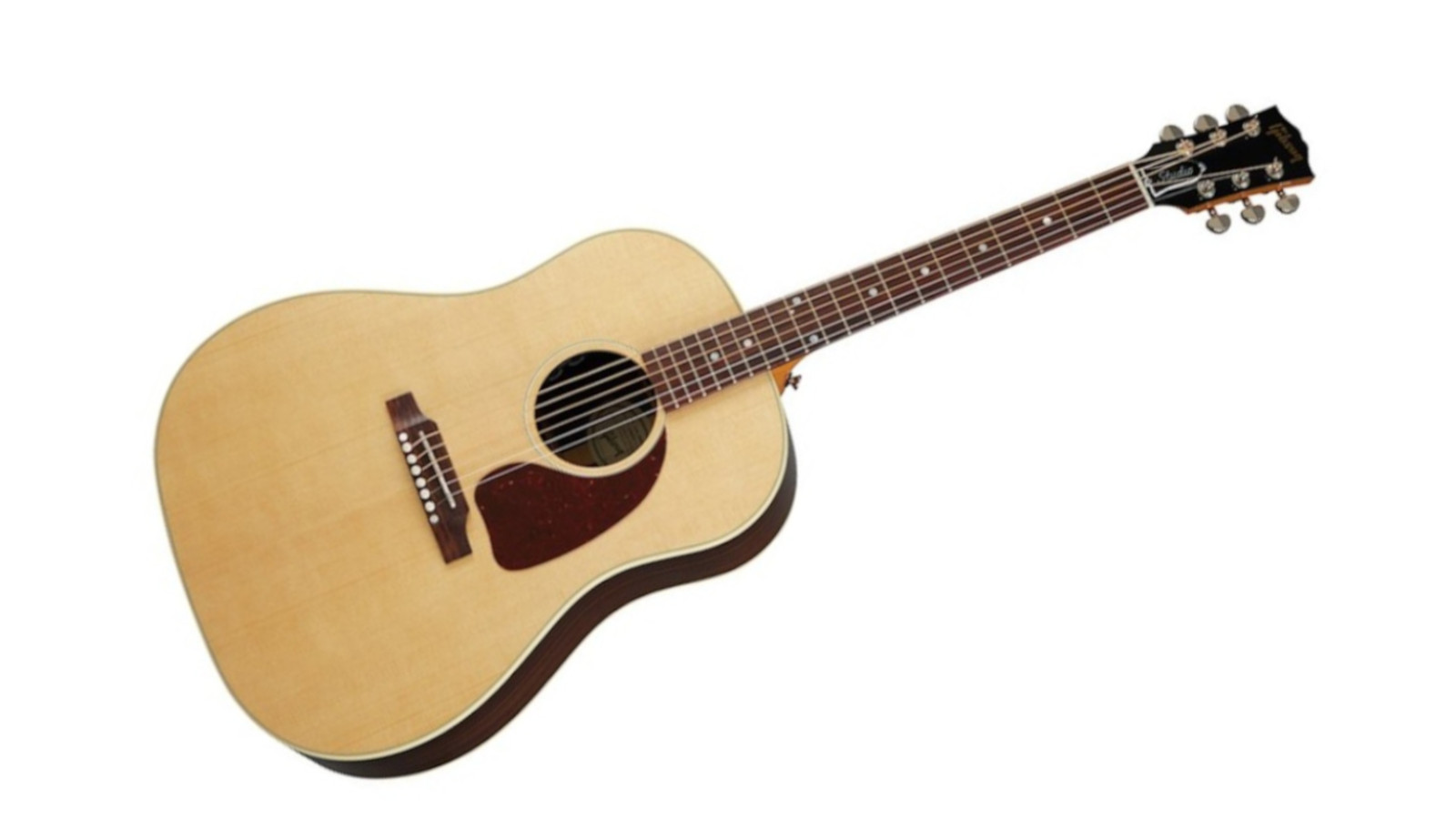
3. Gibson J-45 Studio Rosewood
Our expert review:
Specifications
Reasons to buy
Reasons to avoid
✅ Buy if you want a no-nonsense, workhorse acoustic: Whether you're writing, recording or playing live, the J-45 Studio is a great investment.
❌ Avoid if you'll be mostly playing standing up: It's not a big criticism, but the J-45 Studio is more comfortable to play while sitting.
Build: ★★★★★
Playability: ★★★★★
Sound: ★★★★★
Overall: ★★★★★
J-45s are tons of fun to play. They’re a great workhorse guitar which is probably why they’ve been played by such a wide range of musicians. This Studio version is more affordable than the Standard, but still packs a lot of the same punch. If you’re looking for one of the best acoustic guitars for writing, gigging, recording or even learning, this can do absolutely everything!
A solid spruce top is paired with solid rosewood back and sides. It’s quite bright sounding, but the dreadnought body shape ensures that you get a powerful low end too, so it’s lovely and balanced. You get great note clarity and separation which is useful in the studio. We also found it to be very responsive and dynamic so you really get out of it what you put in.
The slightly slimmer body depth is super comfortable – you still get the rich, deep tones you’d expect, but it does make sitting down with it in particular a touch easier. Smaller players might also find reaching around to strum it that bit easier too.
Best budget
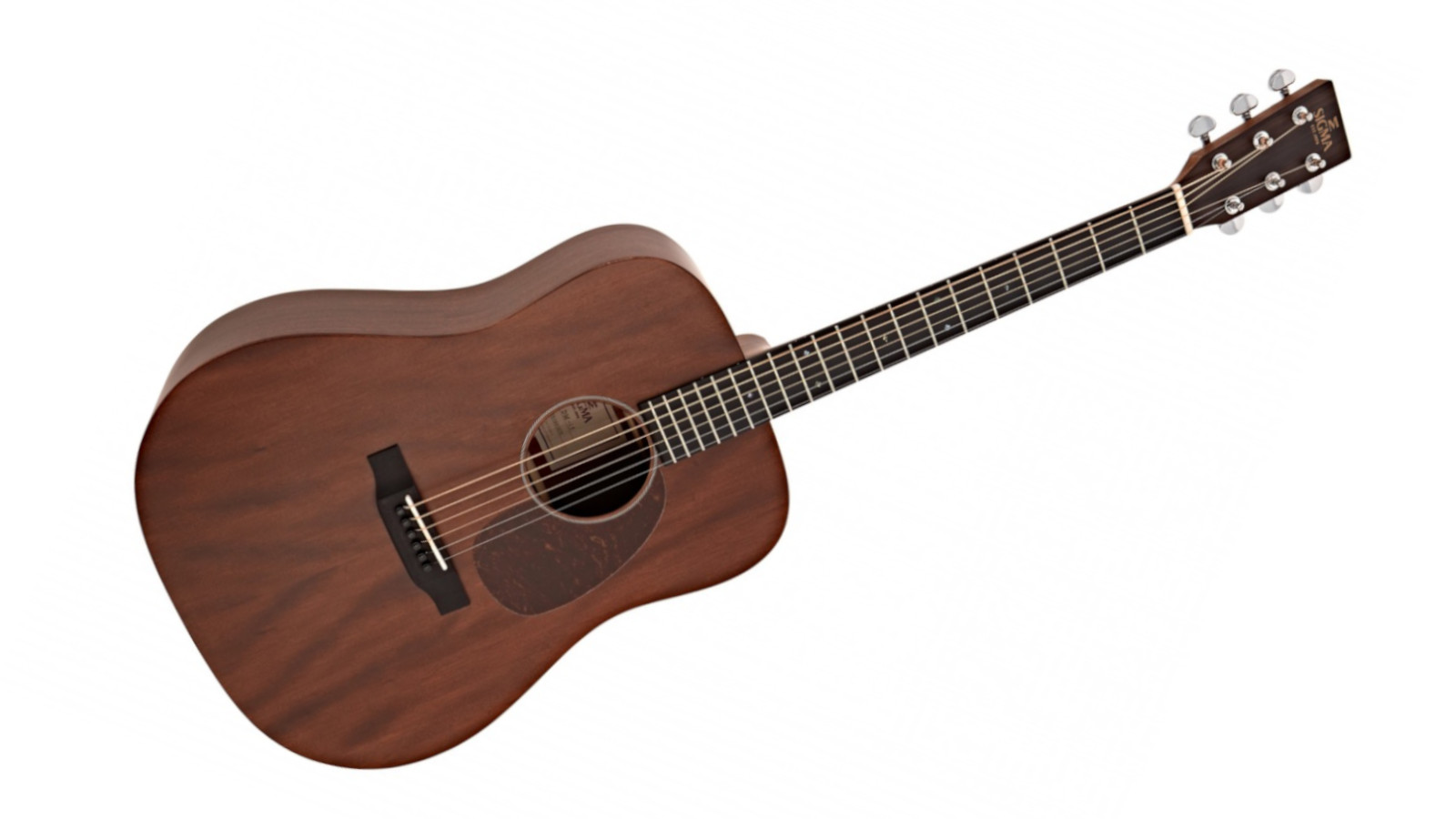
4. Sigma DM-15
Our expert review:
Specifications
Reasons to buy
Reasons to avoid
✅ Buy if you're looking for a dreadnought for a brilliant price: The Sigma DM-15 produces big sound for a budget price.
❌ Avoid if you have a bit more cash to spend: Spending more will give you more so more experienced players might want to look elsewhere.
Build: ★★★★½
Playability: ★★★★½
Sound: ★★★★½
Overall: ★★★★½
Sigma makes some great guitars inspired by other legendary models. The DM-15 is its take on a mahogany Martin dreadnought (Martin actually used to be involved with Sigma until 2007), and we think it represents fantastic value for money.
A solid mahogany top is paired with laminate mahogany back and sides resulting in a great sounding guitar with plenty of bass and treble frequencies, and a nice, albeit slightly tamer, mid presence.
You get great note separation so chord work is a joy on this guitar, though lead lines will ring out beautifully as well.
It has a big sound, and it projects really well. A nice bonus is the addition of Grover machine heads which hold the tuning brilliantly.
If you want the power and volume of a dreadnought with a touch of added warmth, then here is a fantastic option that’s also easy on your wallet.
Best beginners

Specifications
Reasons to buy
Reasons to avoid
✅ Buy if you're just starting your acoustic journey: The FG800 MKII is solid, reliable and is a great pick for a first-timer.
❌ Avoid if you're buying for a young player: The dreadnought body might be too big for smaller hands.
Build: ★★★★★
Playability: ★★★★½
Sound: ★★★★★
Overall: ★★★★★
The Yamaha FG series has been around since the 1960s and in that time has provided countless players with quality, affordable instruments.
The FG800 is a sturdy, reliable and traditional dreadnought made with a solid spruce top and laminate nato/okume back and sides. It sounds rich and balanced, and will gradually sound better over time as the top breaks in.
Playability-wise, the FG800 is great, particularly for those in the market for a great beginner acoustic, but more experienced players will get along with it just fine too.
The neck profile is quite thin, but still with enough body to it to really get your hands around; the neck also has a matte finish which means that if you’re playing for long periods then the neck doesn’t get slippy as you sweat.
There isn’t much to dislike about the Yamaha FG800 but it's worth noting that its size might be too big for younger players. But if you’re seeking a top-quality budget dreadnought, then it’s one of the best out there.
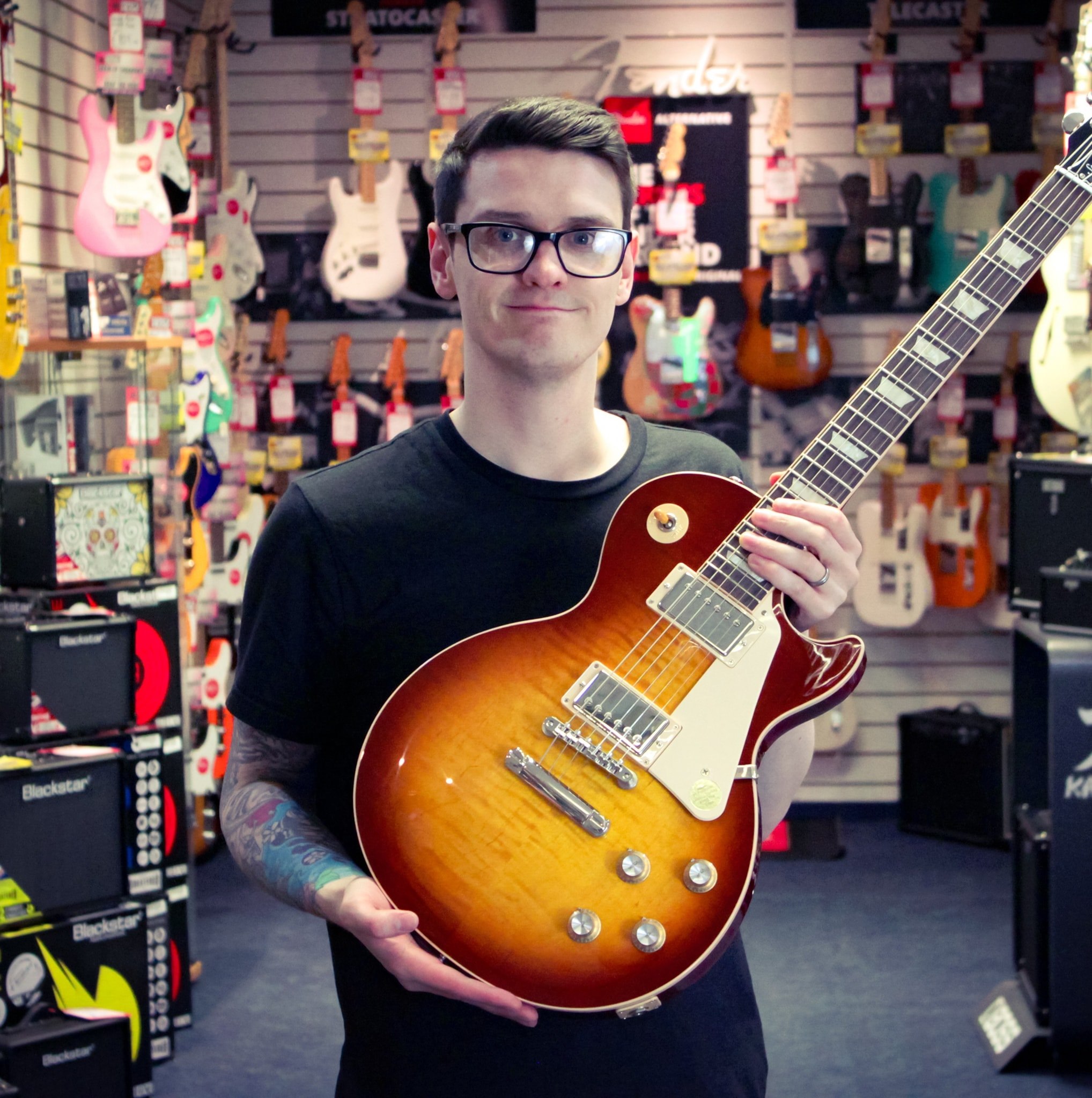
"There’s no doubt about it, the Yamaha FG800 is one of the greatest beginner acoustic guitars of all time. Its solid top helps deliver a rich, full-bodied tone usually reserved for more expensive instruments. In addition, the smooth neck is comfortable, extremely playable, and perfect for players at the beginning of their musical journey."
Read more: Yamaha FG800 review
Best tone

Specifications
Reasons to buy
Reasons to avoid
✅ Buy if you want a classic acoustic with eye-opening audio: The Masterbilt Texan is a classic, with its long scale giving it a unique tone.
❌ Avoid if you want a more "normal" tone: Purists might want something a little more traditional from their Texan.
Build: ★★★★½
Playability: ★★★★½
Sound: ★★★★★
Overall: ★★★★½
Whether you consider it a squared-off jumbo, a round-shouldered dreadnought or simply a long-scale version of the Gibson J-45, one thing’s for sure – the Epiphone Masterbilt Texan deserves more plaudits.
It’s a bit of a sleeper, but it’s not without its fans. Paul McCartney played a Texan when recording Yesterday, and his name has been associated with the guitar ever since. Jimi Hendrix, Bert Jansch, Peter Frampton and Noel Gallagher have all favoured a Texan in their time too.
There have been a number of iterations over the decades, but the Epiphone Masterbilt Texan is clearly inspired by the ’60s model, as played by McCartney and Frampton.
True to period, the top is solid sitka spruce, whereas the back and sides are solid mahogany – an impressive spec at this price point.
A notable contemporary addition is the Fishman Presys VT pickup and preamp system, making this guitar an excellent choice for live performance. It’s also available in two finishes, Antique Natural Aged and Faded Cherry Aged.
The Epiphone Masterbilt Texan has a scale length of 647.7 mm/25.5 in, which is considered long. This increases string tension, which gives the Texan a comparatively bright tone and oodles of sustain.
If you’re looking for a dreadnought but want something that breaks the mould, both sonically and aesthetically, the Texan deserves to be on your shortlist.

"For less than a grand, you’re getting a lot of acoustic guitar with the Epiphone Masterbilt Texan. It’s a bit of an outlier versus the more popular J-45 and Hummingbird, but if you don’t fancy a shorter scale or the Hummingbird is a little too garish for your tastes, it’s a brilliant acoustic in its own right."
Read more: Epiphone Masterbilt Texan review
Best value
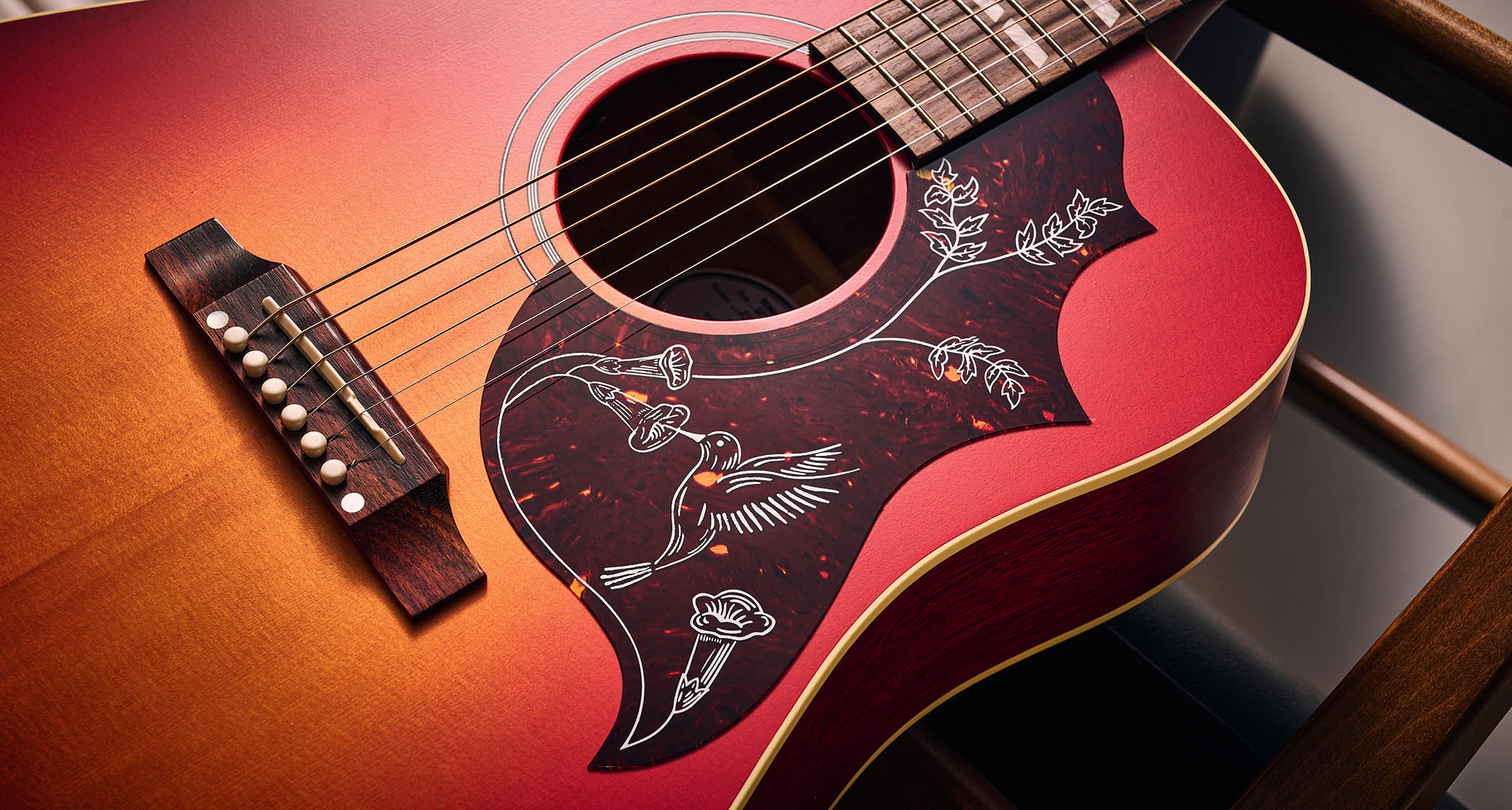
Specifications
Reasons to buy
Reasons to avoid
✅ Buy if you want an affordable Gibson: A US-made Gibson for half the price you'd usually pay? Sign me up!
❌ Avoid if you want a more premium model: A Gibson it may be, but the plastic inlays and gaudy finishes might put some off.
Build: ★★★★
Playability: ★★★★½
Sound: ★★★★
Overall: ★★★★
Gibson guitars have a reputation for being expensive, which is why this mid-priced Hummingbird got my full attention. It’s every bit a full-fat Gibson – USA made, solid tonewoods, quality electronics and a premium satin nitrocellulose lacquer finish – yet it’s a fraction of the price of a regular Hummingbird Standard. Less than half the price, in fact.
So, what gives? Well, very little. It’s crafted by the same team of expert luthiers in Bozeman, Montana who are currently responsible for all Gibson acoustic guitars. Similarly, the build is classic Hummingbird, featuring a solid Sitka spruce top, mahogany back, mahogany sides, scalloped X-bracing and a neck set into the body with a compound dovetail joint.
If there is a significant point of difference, it’s that its ‘concert depth body’ is slightly thinner than that of the Hummingbird Standard, a change that Gibson says produces a tighter bass response.
Neville Marten, who reviewed this guitar for Guitar World, found that, in the hand it felt reassuringly similar to his own Custom Shop Hummingbird, a guitar that’s a “breeze to play and never becomes tiring”.
Reviewing this model alongside Gibson’s similarly-priced J-45 Special, Marten continued, “There’s no doubting that they have that signature Gibson tone. We’d actually been playing the guitars for a good 30 minutes before the penny dropped that they were a smidge shallower…” He added that, “The Hummingbird is definitely the fatter and warmer of the two, making it a brilliant strummer.”

"In the final analysis, while the odd corner has clearly been cut, remember this is a true Gibson with all the individuality that this brand exhibits, arguably over all others. They’ve definitely fulfilled their ‘good guitar on a budget’ remit and, although I wasn't so sure at first, it looks like I might just have made a new best friend."
Read more: Gibson Hummingbird Special review
Best for busking
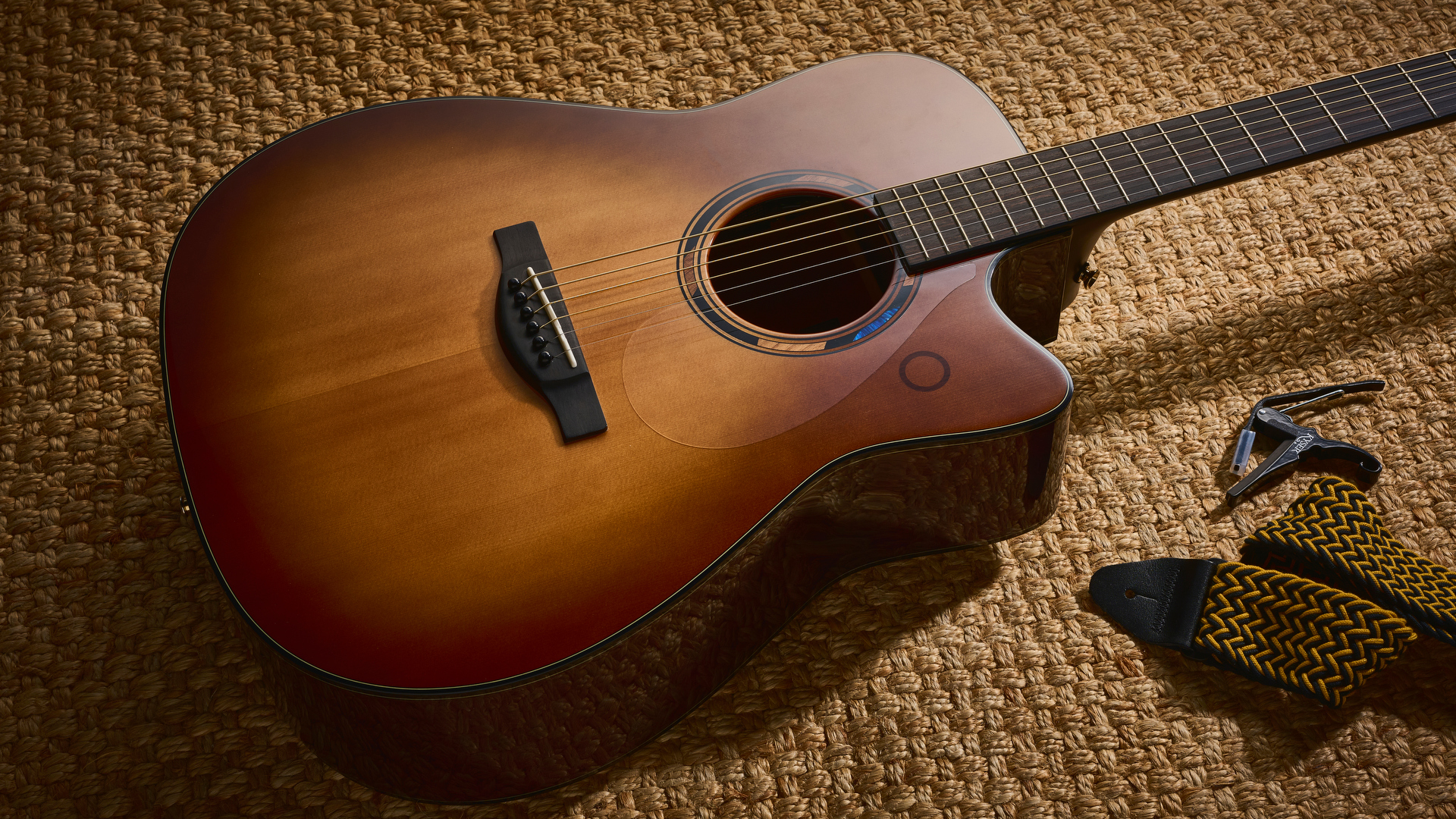
Specifications
Reasons to buy
Reasons to avoid
✅ Buy if you're looking for a feature-rich acoustic: With built-in delay, chorus, reverb effects and looper with a tap sensor, there's a lot to get your teeth into.
❌ Avoid if you just want a no-frills dreanought: All the bells and whistles are lovely, but some players won't need these extras.
Build: ★★★★½
Playability: ★★★★½
Sound: ★★★★★
Overall: ★★★★½
Looking for more sonic opportunities than a regular acoustic guitar can offer? Yamaha’s TAG3 C won’t disappoint; it’s quite simply one of the most technically advanced steel-strings available today.
Offering a heady mix of traditional tonewoods, craftsmanship and state-of-the-art electronic effects, there’s little else quite like it on the market. Getting straight to it, this guitar features jaw-droppingly beautiful built-in delay, chorus and reverb effects, plus a looper with a tap sensor.
What’s remarkable about the TAG3 C is that you don’t need to plug into any external gear to hear these effects. As if by magic (in reality, two actuators installed on the inside face of the guitar’s back) these effects piggyback the TAG3 C’s body, which, like any acoustic, serves as one big resonance chamber.
In short, you hear these effects via the soundhole, as you would a plucked note. The effects are so tightly integrated that they really sound at one with the instrument; there’s nothing synthetic about the tone whatsoever.
Even without the headline-grabbing smart technology, this is a superb-quality acoustic in its own right. Yamaha rarely makes a dud, and the TAG3 C, with its solid tonewoods and superb craftsmanship, is a testament to that.
Turning the tech on does, of course, elevate this guitar to new heights. The effects add space and airiness, while the looper provides so many creative opportunities. Buskers will absolutely adore it.

"The TAG3 C is definitely an upgrade from the earlier iterations of the TransAcoustic. The effects are better and the presence of the looper adds an entirely new dimension to the proceedings. It really is a lot of fun, and the fidelity of the recorded sounds emanating from the soundhole is quite amazing."
Read more: Yamaha TAG3 C TransAcoustic review
Most authentic
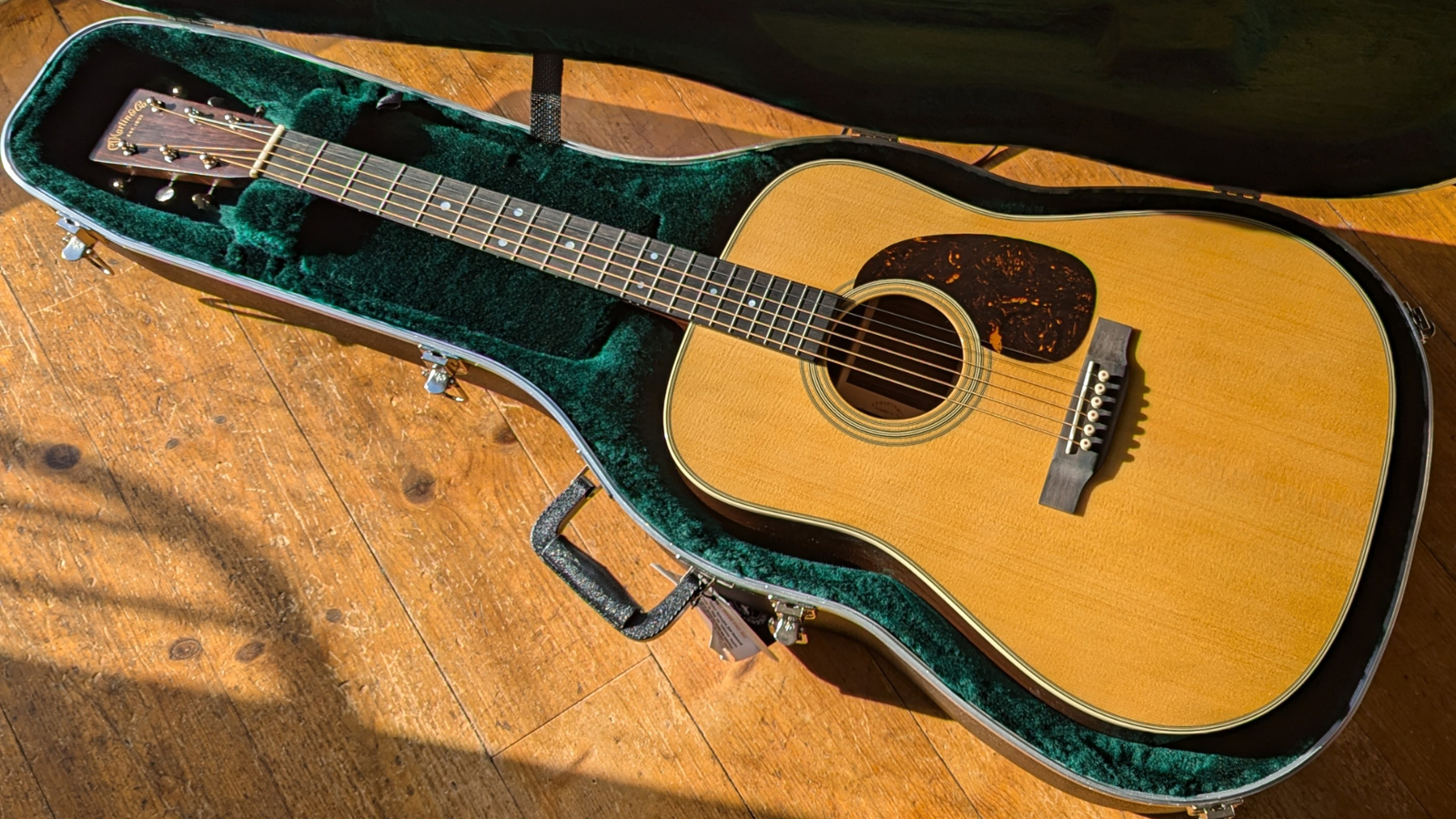
Specifications
Reasons to buy
Reasons to avoid
✅ Buy if you want to own one of the most iconic acoustics in music history: One of the most influential acoustics around, the D-28 is a slice of musical history.
❌ Avoid if you're looking for something a little more affordable: Being an icon comes with a price that many budgets just won't stretch to.
Build: ★★★★★
Playability: ★★★★★
Sound: ★★★★★
Overall: ★★★★★
This buyer’s guide wouldn’t be complete without a Martin D-28, the six-string that started the vogue for big, bold, loud guitars. It may not be the original – that honour goes to the Martin-made Oliver Ditson dreadnoughts introduced in 1916 – but it is the most definitive and the most influential.
In a nutshell, the Ditson dreads were a flop, but Martin relaunched them as the D-18 and D-28 (strictly speaking, originally as the short-lived D-1 and D-2) in the early 1930s, and the rest is history. And, what a history it is. The D-28 has been played by just about every acoustic guitarist and singer-songwriter who’s ever strummed three chords. It would be easier to name the stars who haven’t played this incredible instrument.
If the D-28 is the archetypal dread, Martin’s current iteration is the quintessential build. The top is made from spruce, with the back and sides crafted from East Indian rosewood.
Martin says the dovetail-set neck is ‘Select Hardwood’, most likely mahogany, and the fingerboard is a gorgeous slice of ebony. The dot marker inlays are made of mother-of-pearl, providing a restrained look that sits well with the white body binding and its vintage open gear tuners. The Martin D-28 is available in either a gloss or a satin finish in both right- and left-handed versions.
If you want to own a great-sounding dread that’s also an iconic piece of musical history, look no further.

"There’s a reason the Martin D-28 continually tops lists of the most famous acoustic guitars. It sounds incredible, is brilliantly put together, and delivers an inspiring playing experience."
Read more: Martin D-28 review
Also tested
Still haven't found what you're looking for? Here are some more dreadnought options we rate.
Fender California King Vintage
★★★★
Top: Solid spruce | Back & sides: Solid ovangkol | Neck: Okoume | Fingerboard: Ovangkol | Bracing: Forward Shifted X-bracing | Pickup: Fender/Fishman Presys VT Plus Soundhole Pickup System | Left-handed: No
This is essentially a modern take on one of Fender’s first ever acoustics. It has Fender’s Performance X-bracing which allows the top to move more, giving it plenty of projection while retaining articulation and clarity. It being all solid wood, it also resonates really well and sounds super rich with beautiful overtones and a nice amount of low end. The aged natural finish really helps contribute to the whole vintage vibe of the guitar too.
Read more: Fender California King Vintage review
Fender Highway Series dreadnought
★★★★½
Top: Solid spruce | Back & sides: Solid mahogany | Neck: Mahogany | Fingerboard: Rosewood | Bracing: Tapered, floating X-brace | Pickup: Fishman Fluence | Left-handed: No
The Highway Dreadnought has a much thinner body than a regular acoustic – it’s just 2.25” thick making it really easy for players of all statures to get their arms around; even children. The tapered floating X-bracing helps it resonate and gives it its natural tone, along with the solid spruce top (it’s also available with a mahogany top). This guitar sounds great unplugged, but it is fitted with a Fishman Fluence acoustic pickup that has a couple of different voices, making it perfect for live performances or even direct recording.
Read more Fender Highway Series Dreadnought review
FAQ
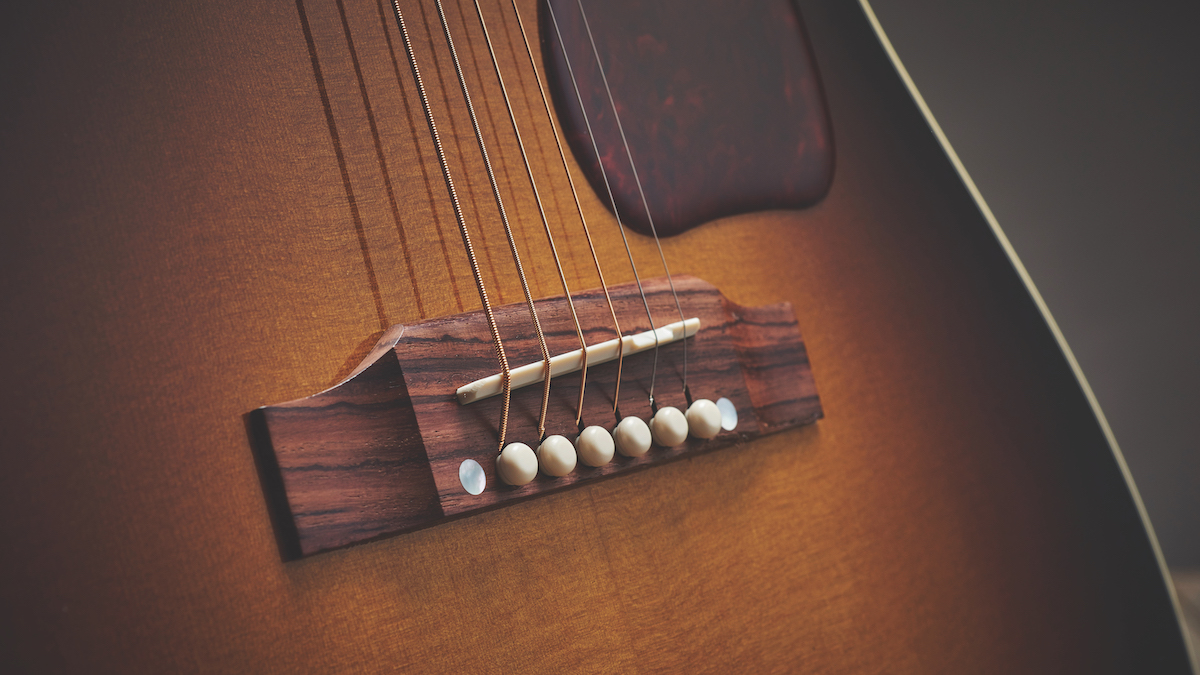
How much should I spend on a dreadnought?
How much you should spend on a new dreadnought will always come down to the budget you have. There are some great guitars for not much money – the Yamaha FG800 comes to mind. If you look around the $/£300 price point, you’ll find some good instruments with a solid top that provide you with the powerful dreadnought tone and that are built well.
When you get to guitars around the $/£750-1,000 mark, you’ll notice a bunch of improvements. The quality of materials used will be higher; you might even get all solid wood at this price. These guitars are perfect for many intermediate players, or even professionals that want a reliable workhorse that they can take on the road. From the studio to the stage, the best dreadnought guitars at this price point will serve you well.
Once you get into the thousands, you’re in the realm of serious, pro-level instruments. Many of these will be made in the US, from all solid woods. Everything used to make the guitar – woods, hardware etc – will be of a higher standard, and you might get more aesthetic luxuries, too; fancy fretboard inlays, body binding and the like.
What do I need to know about tonewoods?
Spruce, mahogany and rosewood are common woods used on dreadnoughts. Quite often, makers will use one wood for the top, then another for the back and sides, though sometimes, they’ll use the same throughout.
The top piece of the body can be seen as being like a speaker cone; it shapes the tone of the guitar quite a lot. Spruce is probably the most common wood – it sounds fairly bright, it’s versatile, articulate and it responds well to your playing. You might see cedar being used, too – this is generally warmer sounding, and not quite as complex. People love mahogany topped guitars for their warm, woody tone and richer midrange.
The back and sides can help eliminate or enhance certain frequency ranges, so they do contribute a lot to the instrument's voice too. Mahogany is used a lot as it can help balance out the highs and lows of spruce, particularly on a dreadnought. Rosewood is another popular wood for the back and sides, though CITES regulations do tend to make it expensive. It has a rich, complex sound with clear highs and defined low frequencies. Walnut is sometimes used in place of rosewood as it has similar tonal properties and is cheaper to source.
What's the difference between between solid wood and laminate?
If you’re on the hunt for the best dreadnought guitar, you’ll certainly come across specs that talk about solid wood. On an acoustic guitar, solid wood moves and vibrates more than laminated or layered wood does. This leads to more sustain, and a richer, more complex, and just generally better tone.
As you might expect, solid wood is more expensive. What you’ll find on many guitars, particularly those priced around $/£250-800, is that the body has a solid top, and laminate back and sides. The top plays a big part in the sound you hear from an acoustic, so by making this solid, and the back and sides (which do still affect tone) laminated, builders can produce guitars that sound great, but that are also affordable.
Should I buy a dreadnought with a cutaway?
A ‘cutaway’ is a section of the upper bout (the part of the body next to the neck) that’s been removed to enable your fretting hand to reach the higher frets. Providing access to the higher register – aka the dusty end of the fretboard – sounds like a great idea, but is it?
Electric guitar players tend to play a lot of lead lines or solos in this area of the fretboard, which is why these instruments are invariably designed with at least one cutout, often two.
However, acoustic players rarely venture this high up the fretboard for a handful of very good reasons. Acoustic guitars have a much higher action than their electric counterparts, making fretting a note here harder. Additionally, string tension, which is already considerably higher on an acoustic than an electric, becomes taut beyond belief as you venture to the extreme end of the fretboard. Such tension makes it tricky to pluck a note with any vigor, resulting in feeble-sounding tones that lack power and volume.
The wider fretboards associated with acoustic guitars don’t make accessibility easy either, cutaway or not. Finally, many acoustic guitarists consider cutaways to be an aesthetic abomination, the work of the devil.
Sold? Well, you don’t need a cutaway until you realise you do, so it is a feature worth losing a little shut-eye over, but not so much that you become sleep deprived. Contrary to popular belief, cutouts barely affect tonal quality, if at all, because there’s very little movement in the guitar’s top at this end of the body. Essentially, the decision rests on the sort of music you intend to play.
As a final thought, Tommy Emmanuel, one of the world’s foremost acoustic guitarists, is very rarely seen with a cutaway guitar. But, every so often…
Do I need a dreadnought with built-in microphone?
If you’re a performer or plan on performing, then buying a dreadnought with an integrated solution to capture and broadcast your performances is a great idea.
Built-in systems vary widely, from simple piezo pickups to internal condenser mic set-ups that ship complete with extensively configurable preamps. It’s also common for brands to combine piezo pickups with condenser mics, enabling you to blend the two to arrive at the best possible sound reproduction.
If you're not planning on performing, and perhaps your budget is tight, then my advice is to buy the best quality guitar you can afford, without worrying about electronic wizardry. There are numerous aftermarket solutions that you can install yourself at a later date, once you have more funds.
Can I play fingerstyle on a dreadnought?
You can! It’s true that dreadnoughts are lacking in the midrange frequencies, which makes them wonderful guitars for singer-songwriters, but a little less than optimal for guitarists determined to play fingerstyle. Slightly smaller guitars, such as a Grand Concert (00) or Orchestra Model (OM), offer a more evenly balanced tone, which makes them exceptional for the midrange nuances that fingerstyle guitarists live and breathe for.
Still, don’t let that put you off, it’s perfectly acceptable and pleasurable to play fingerstyle on a dreadnought. It won’t sound bad, just a little lacklustre in the mid-tones.
Should I consider a smaller alternative?
There’s no getting away from it – dreadnoughts are big guitars. The clue is in the name, a moniker inspired by the huge dreadnought battleships that were state-of-the-art in the early 1900s when these guitars were first introduced. The benefit of all this vastness is volume but, unfortunately, for some people, dreads are just too big to handle. For smaller players, it’s a lot of timber to wrap your arms around.
The solution? Some brands, such as Taylor, make a scaled-down version of the dreadnought. Its Baby guitar is a ¾ size dread, which is ideal for petite players and children, or just as a convenient guitar to take with you when traveling.
Alternatively, a slightly smaller guitar, such as a good quality Auditorium (000) or Orchestra Model (OM) will provide almost as much volume as a dread, with a touch more midrange.
Which famous guitarists play a dreadnought?
Frankly, it’s such a well-loved instrument you could pick almost any performer. The image of the young Elvis belting out songs on his ’50s Martin D-28 is iconic, but then there’s Johnny Cash, Hank Williams, Paul McCartney, John Lennon, Neil Young, Joni Mitchell, David Crosby, Paul Simon, Van Morrison, David Gilmour, David Bowie, Kurt Cobain, Ed Sheeran, Billy Strings, Ben Earle, Mollie Tuttle, Gabrielle Aplin and many more.
How we choose the best dreadnought guitars
Here at Guitar World, we are experts in our field, with many years of playing and product testing between us. We live and breathe everything guitar related, and we draw on this knowledge and experience of using products in live, recording and rehearsal scenarios when selecting the products for our guides.
When choosing what we believe to be the best dreadnought guitars available right now, we combine our hands-on experience, user reviews and testimonies and engage in lengthy discussions with our editorial colleagues to reach a consensus about the top products in any given category.
First and foremost, we are guitarists, and we want other players to find the right product for them. So we take into careful consideration everything from budget to feature set, ease of use and durability to come up with a list of what we can safely say are the best dreadnought guitars on the market right now.
Read more about our rating system, how we choose the gear we feature, and exactly how we test each product.
Why you can trust us
☑️ A global audience of 3.8 million guitarists monthly
☑️ 1,200+ reviews on GuitarWorld.com
☑️ 30+ years of product testing at Guitar World
Guitar World boasts over 44 years of expertise and stands as the ultimate authority on all things related to guitars. The magazine and website feature expertly written gear round-ups and top-quality, authoritative reviews penned by a team of highly experienced industry professionals.
Guitar World's inaugural print issue hit the shelves in July 1980, and ever since, it has been captivating players and enthusiasts with engaging lessons, insightful interviews with the biggest guitar heroes, and priceless buying advice for newbie players.
Furthermore, GuitarWorld.com continues this legacy online and serves as the hub of the world's foremost authorities on guitar playing. The site not only hosts content from Guitar World but also showcases articles from respected publications such as Guitarist, Total Guitar, Guitar Techniques, and Bass Player. With a reach extending to 3.8 million players each month, GuitarWorld.com is a go-to destination for guitar fanatics globally.
Meet the experts

After spending a decade in music retail, I’m now a freelance writer for Guitar World, MusicRadar, Guitar Player and Reverb, specialising in electric and acoustic guitars, bass, and almost anything else you can make a tune with. When my head’s not buried in the best of modern and vintage gear, I run a small company helping musicians with songwriting, production and performance, and I play bass in an alt-rock band.

When Simon's childhood classical guitar teacher boasted he 'enjoyed a challenge', the poor man had no idea how much he'd underestimated the scale of the task ahead. Despite Simon's lack of talent, the experience did spark a lifelong passion for music. His classical guitar was discarded for an electric, then a room full of electrics before Simon discovered the joys of keys. Against all odds, Simon somehow managed to blag a career as a fashion journalist, but he's now more suitably employed writing for Guitar World and MusicRadar.
Latest updates
28/07/25: The guide has received four new product entries: Epiphone Masterbilt Texan, Gibson Hummingbird Special, Yamaha TAG3 C TransAcoustic and the Martin D-28. Expert verdict boxes have been added to product entries where applicable, while each dreadnought guitar featured in the guide now has "At a glance" panels and star ratings attached. The FAQ section includes brand new Q&As and a section explaining why you can trust the GuitarWorld team has also been included. Finally, a meet the experts section has been added to the guide.
Read more
You can trust Guitar World
- Best parlor guitars: compact acoustics from Martin, Yamaha & more
- Best acoustic guitars under $500: our affordable top picks
- Best acoustic guitars under $1,000: great tone for less
- Best acoustic electric guitars: electro-acoustics for all players
All the latest guitar news, interviews, lessons, reviews, deals and more, direct to your inbox!
After spending a decade in music retail, I’m now a freelance writer for Guitar World, MusicRadar, Guitar Player and Reverb, specialising in electric and acoustic guitars, bass, and almost anything else you can make a tune with. When my head’s not buried in the best of modern and vintage gear, I run a small company helping musicians with songwriting, production and performance, and I play bass in an alt-rock band.
